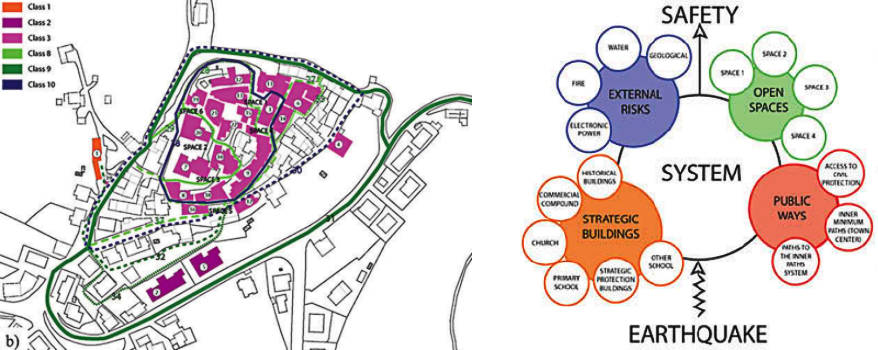Title of Project:
Earthquake Spectral Provisions and Urban Fragility Evaluation
Hosting Research Infrastructure:
NORSAR
No. of Users:
3
Team Leader:
University “G. D’Annunzio” of Chieti-Pescara
Samuele Biondi
Team:
University “G. D’Annunzio” of Chieti-Pescara
Ivo Vanzi
Alessandro Pagliaroli
Summary of Project:
Seismic prevention and mitigation of historical centers have gained a central position within earthquake engineering topics, particularly in such areas having a high seismic risk.
Many historical towns in these areas have been strongly damaged, due to the high quantity of old buildings and urban structures and infrastructures.
In the past these aspects are modeled in terms of structural safety, the goal being the set-up of a comprehensive strategy for seismic prevention and mitigation of a whole historical center.
The carried out approach was based on two relevant parts:
the first was urban risk assessment, the second was a prioritization of retrofitting interventions so as to optimally increase urban safety.
The effectiveness of this methodology has been shown with reference to various complex case studies regarding different historical centers.
In this cases the urban system was modeled as a series/parallel system and then studied by applying seismic reliability methods.
Seismic input has been assumed as a function of the earthquake intensity expressed in terms of Mercalli – Cancani – Sieberg (MCS) intensity scale and fragility functions was defined in order to evaluate the probability of failure of each class of buildings or infrastructures.
This approach in earthquake intensity is crucial.
The MCS intensity scale is post-earthquake damage evaluation: the intensity is linked to the detected damage.
The detected damage is depending both on damage evaluation procedure and on social “pressure” on infrastructure under evaluation.
So this approach needs to be refined and to be improved.
On one hand an objective approach has to be defined in terms of earthquake spectral provisions and on the other hand an objective evaluation of structural damage has to be determined.
For the first topic a comparison with historical earthquake intensity could be the preeminent argument, for the second the ordinary management and retrofitting activities on structures has be considered.


